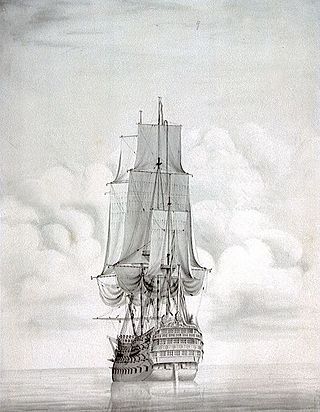
HMS Vanguard was a 90-gun second-rate ship of the line of the Royal Navy, built at Portsmouth Dockyard and launched in 1678.
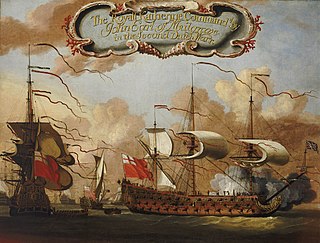
HMS Royal Katherine was an 84-gun full-rigged second-rate ship of the line of the Royal Navy, launched in 1664 at Woolwich Dockyard. Her launching was conducted by Charles II and attended by Samuel Pepys. Royal Katherine fought in both the Second and Third Anglo-Dutch Wars and afterwards, the War of the Grand Alliance before entering the dockyard at Portsmouth for rebuilding in 1702. In this rebuilding, she was upgraded to carry more guns, 90 in total, and served in the War of the Spanish Succession during which she was renamed Ramillies in honour of John Churchill's victory at the Battle of Ramillies. She was rebuilt again in 1742–3 before serving as the flagship of the ill-fated Admiral John Byng in the Seven Years' War. Ramillies was wrecked at Bolt Tail near Hope Cove on 15 February 1760.

HMS Cornwall was an 80-gun, third rate, ship of the line built for the Royal Navy in the 1690s. She served in the War of the Grand Alliance, and in her first year took part in the Battle of Barfleur and the action at La Hougue.
Bristol was a 44-gun fourth rate vessel of the Commonwealth of England built under the 1651 Programme. She arrived too late for the First Anglo-Dutch War, however, was an active participant in the Second Anglo-Dutch War though in the Third she was no longer used as a line-of battle vessel and reverted to a role of cruising against privateers. She was lost in this role in the English Channel when she was captured by the French. Two weeks she was recaptured by the English and sank in 1709.
HMS Restoration was a 70-gun third rate of the Kingdom of England built at Harwich Dockyard in 1677/78. After a ten-year stint in Ordinary she was commissioned for the War of the English Succession in 1690. She fought in the Battles of Beachy Head and the Battle of Barfleur. She was rebuilt at Portsmouth in 1699/1702. She was lost on the Goodwin Sands during the Great Storm of November 1703.
HMS Ruby was a 40-gun frigate of the Commonwealth of England, built by Peter Pett at Deptford. She took part in actions during all three of the Anglo-Dutch Wars of 1652–1654, 1665–1667 and 1672–1674. She later served in the West Indies, and in 1683 was sent to the Leeward Islands to protect British settlements against Caribbean pirate raids. In 1687, the English pirate Joseph Bannister was captured by the crew of Ruby and brought to Port Royal for trial. She was rebuilt in 1687. She was captured by the French in October 1707.

Loyal London was an 80-gun second-rate ship of the line of the Royal Navy, launched on 10 June 1666 at Deptford Dockyard with a burthen of 1,236 tons. She was established with 80 guns comprising 22 cannon-of-seven, four demi-cannon, 26 culverins and 28 demi-culverins; in July 1666 this was raised to 92 guns, comprising seven cannon-of-seven, 19 demi-cannon, 28 culverins, 26 12-pounders and 12 demi-culverins.

Sir Anthony Deane, FRS was an English shipwright and politician who sat in the English House of Commons and served as mayor of Harwich.

Constant Warwick was originally a 32-gun privateer, built in 1645 as a private venture between the Earl of Warwick and Sir William Batten and intended to operate as a privateer. Hired for service in the Parliamentarian navy during the First English Civil War, her captain William Batten defected to the Royalists during the 1648 Second English Civil War. After her crew mutinied in November 1648, she returned to England and was purchased by Parliament for the Commonwealth Navy on 20 January 1649. Described as an "incomparable sailer", she was noted for her sharpness and fine lines, and is considered by some as the first true frigate of the Royal Navy. Mainly used for patrolling, she was captured by the French in 1691.
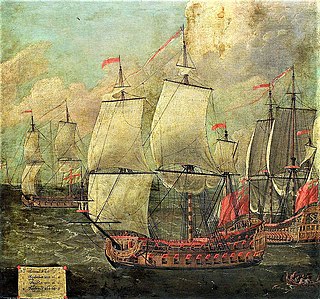
HMS Assurance was a 32-gun fourth-rate of the English Navy, built by Peter Pett I at Deptford Dockyard and launched in 1646. She was in the Parliamentary force during the English Civil War, then the Commonwealth Navy and was incorporated into the Royal Navy after the Restoration in 1660. During her time in the Commonwealth Navy she partook in the Battles of Dover, Portland, Gabbard and Texel. She foundered in a gale at Woolwich in 1660 and was salved. After the Restoration she partook in the Battle of Lowestoffe, the Four Days Fight and the Texel (1673). She was reduced to a Fifth Rate in 1690 before being sold in 1698.

HMS Adventure was a 34-gun fourth-rate of the English Navy, built by Peter Pett II at Woolwich Dockyard and launched in 1646. With the outbreak of the English Civil War she served on the Parliamentary side until 1649. She was incorporated into the Commonwealth Navy in 1650. She partook in the Battle off Dover in 1652, the Battle of Portland and the Battle of Gabbard in 1653. Adventure was employed on Bulstrode Whitelocke's embassy to Sweden, 1653–1654. After the Restoration she was incorporated into the Royal Navy. She was present at the Battle of Lowestoft (1665) and the Battle of Solebay (1672). She also participated in the Golden Horse and Two Lions actions in 1681. She was in the Battle of Barfleur in 1692. She captured several ships in the later part of her career, before being captured by the French in 1709.
HMS Reserve was one of six 40-gun fourth-rate frigates, built for the Commonwealth of England under the 1650 Programme, after the Restoration of the monarchy in 1660 she was incorporated into the navy of the Kingdom of England. She partook in no major Fleet actions during the First Anglo-Dutch War. After the Restoration during the Second Anglo-Dutch War she partook in the Battle of Lowestoft, the Four Days' Battle and the St James Day Battle. She spent the bulk of her service either in the Mediterranean or at Newfoundland. She foundered off Yarmouth in November 1703.
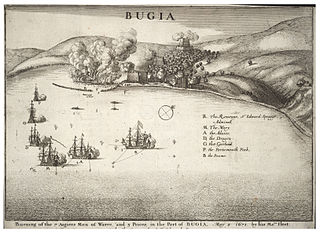
Advice was one of six 40-gun fourth-rate frigates, built for the Commonwealth of England under the 1650 Programme, she would be transferred to the navy of the Kingdom of England upon the Restoration of the monarchy in May 1660. During her time with the Commonwealth Navy she would fight in two major fleet engagements of the First Anglo-Dutch War, this being the Battle of Portland and the Battle of the Gabbard. After the Restoration she would be involved in the Second Anglo-Dutch War specifically the Battle of Lowestoft and the St James Day Battle. She would also be present at the attack on the Vile or better known as Holmes Bonfire. She would see action against the Algerines at the Battle of Bugia. During the Third Anglo-Dutch War she would do battle at the Battle of Solebay, The Battle of Schooneveld and the Battle of Texel. She would also do battle against the French at the Battle of Bantry Bay. She would see service in both the West and East Indies before being rebuilt at Woolwich.
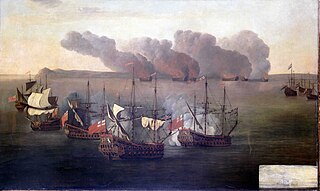
Foresight was a 40-gun fourth-rate of the Commonwealth of England, after the Restoration of the monarchy in 1660 she was incorporated into the Navy of the Kingdom of England. During her time in the Commonwealth Navy she partook in the First Anglo-Dutch War being present in the battles of Dungeness, Kentish Knock, Portland, The Gabbard and Scheveningen. She was also present at the Battle of Santa Cruz and the bombardment of Porto Farina, In the Second Anglo-Dutch War she was involved in the Battle of Vagen and the St James Day Fight. During the Third Anglo-Dutch War she participated in the battles of Schooneveld and Texel. For the remainder of her career she was in the West Indies, the Mediterranean and North American waters. She was wrecked south of Cuba in July 1698.
HMS Assistance was one of six 40-gun fourth-rate frigates, built for the Commonwealth of England under the 1650 Programme, after the Restoration of the monarchy in 1660 she was incorporated into the navy of the Kingdom of England. During her time in the Commonwealth Navy she partook in the First Anglo-Dutch War being present in the battles of Kentish Knock, Portland and The Gabbard. In the Mediterranean she was present at the Battle of Santa Cruz and the bombardment of Porto Farina, In the Second Anglo-Dutch War she was involved in the Battle of Lowestoft, Battle of Vagen and the St James Day Fight. She did not participate in fleet actions after this. She spent the rest of her service life undergoing several rebuilds and plying the waters as a cruiser protecting British trade and projecting British sovereignty. After nearly 95 years of Service she was sunk as a break water at Sheerness at the end of 1745.

HMS Hampton Court was a 70-gun third rate ship of the line of the Royal Navy, launched at Deptford Dockyard in 1678. Her initial commission was to move her to Chatham where she spent in the next ten years in Ordinary. She held an active commission for the War of the English Succession, participating in the Battles of Beachy Head and Barfleur. She was rebuilt at Blackwall in 1699/1701. During the War of Spanish Succession she served mainly in the Mediterranean. In 1707 she was taken by the French and incorporated into the French Navy for four years. She was sold to the Spanish in 1712. She was wrecked in Spanish service off the coast of Florida in a hurricane in 1715.
HMS Bredah or Breda was a 70-gun third rate ship of the line of the English Royal Navy, launched at Harwich in 1679.
HMS Deptford was a 50-gun fourth-rate ship of the line of the Royal Navy, launched at Woolwich Dockyard in 1687. This was the second of three 50-gun ships ordered in 1682/3.

HMS Lancaster was an 80-gun third rate ship of the line of the Royal Navy, launched at Bursledon on 3 April 1694.

HMS Bedford was a 70-gun third rate ship of the line of the Royal Navy, launched at Woolwich Dockyard on 12 September 1698. She carried twenty-two 24-pounder guns and four (18-pounder) culverins on the lower deck; twenty-six 12-pounder guns on the upper deck; fourteen (5-pounder) sakers on the quarterdeck and forecastle; and four 3-pounder guns on the poop or roundhouse.












